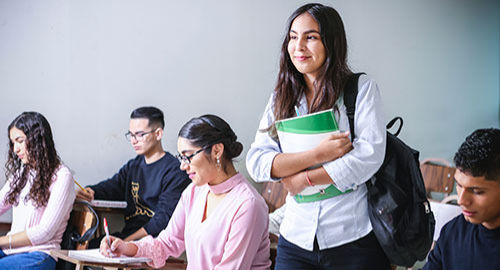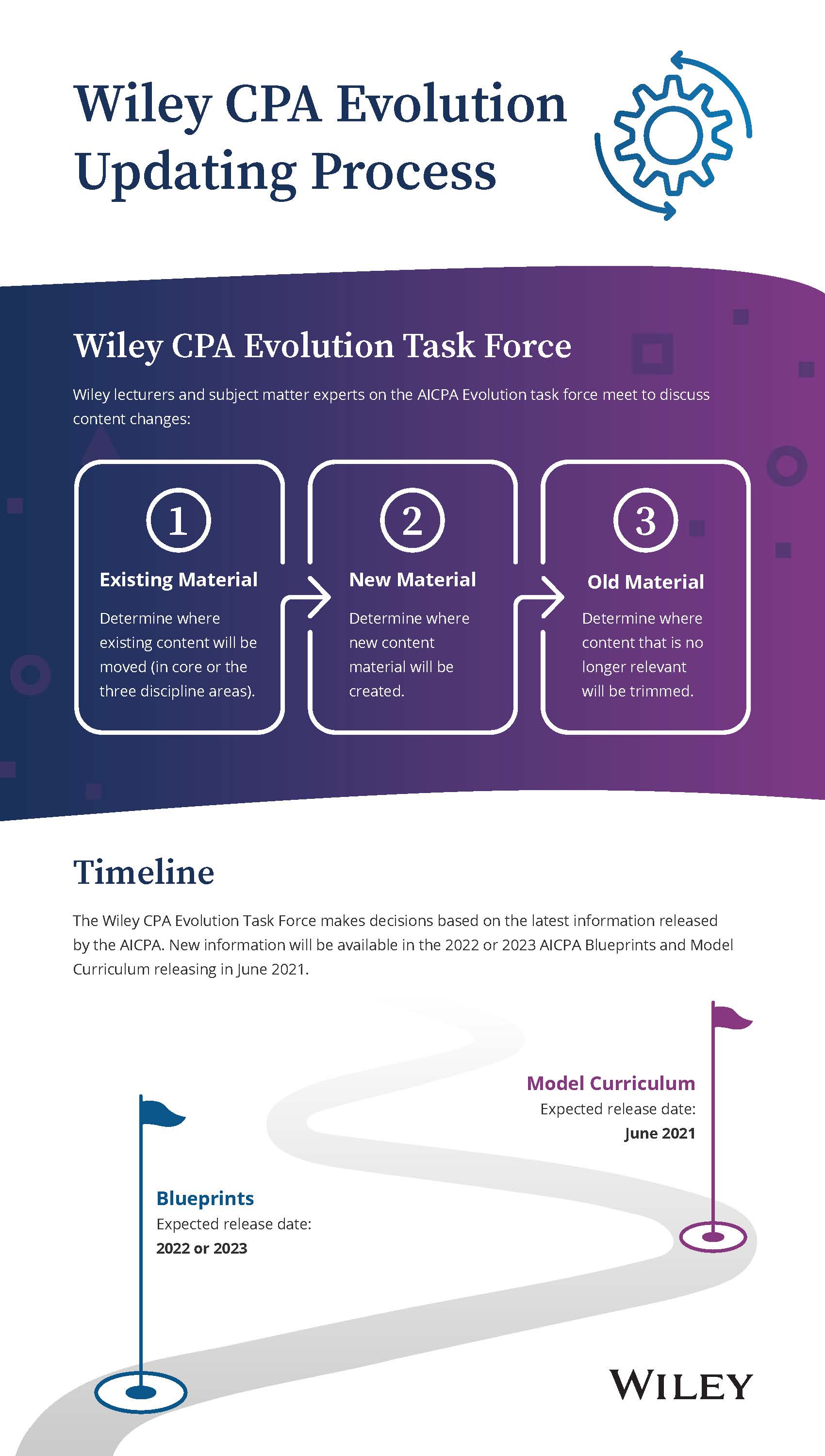cultivating-an-inclusive-learning-experience
December 04, 2020
Students come to you from all walks of life—each having lived a unique experience that may impact how and when they study, how they learn, and even their attention spans. As an instructor, it can be difficult to understand the scope of all those differences, but the sooner you start looking at them and understanding them, the sooner you can make your classroom one with an inclusive learning focus.
What is Inclusive Teaching?
Inclusive Teaching involves cultivating a learning environment where all students are treated equitably, have equal access to learning, and feel valued and supported in their learning. Such teaching examines social identities and seeks to change the ways systemic inequities shape the dynamics in teaching and learning spaces, which ultimately affects individual’s experiences of those spaces and influences courses in curriculum design.
As mentioned above, students come from such different backgrounds and privileges. Some have scholarships, educated parents, and tutors that allow them to achieve their diplomas faster. However, there are also students who may have come from poorly funded schools, less skilled teachers, and truncated curriculum.
While it might be easy to think that you can treat all these students equally, it's very difficult to do that because the world is not equal—and these students need different things from you. And if they don’t get that individualized focus, they're not going to learn as well as the other students, they could fall behind, they could drop out, they could question or change their focus of study, or they could feel excluded from the class.
Thus, it’s more important than ever to ensure students experience a sense of inclusion and that you are aware of and are doing what you can to start to address any issues or exclusions by thinking about the below tips and information.
Perspective
The world can be a very difficult place, and certain factors, situations, and anxieties can make it worse for individuals and students. So it’s more important now than ever to see how your own perspective might be influencing what you think and teach. For example, election results, the pandemic, and other societal factors may be weighing heavily on students’ minds and causing them to miss class, not pay attention, or be less engaged.
To combat this, show concern and empathy. Don’t just treat every day as normal or the same. Showing that these issues or events are at the forefront of your own thoughts can actually help you relate to your students and see what may be influencing their actions, thoughts, and engagement in the course. Really dive into thinking about your social identities and how they influence the lens by which you see things because they impact your ability to create authentic connections with all of your students.
Social Identities
To that point, all instructors should be thinking about social identities and the lens through which you approach your job. Everyone has filters on their lenses, just as we have unconscious and implicit biases.
Thus, you need to constantly and continuously question your own behaviors. How are you showing up each day? How do you see your students? How do you respond to students? How are you grading? Is it fair? Would you let one student turn in an assignment late but not another one? If you can’t recognize any biases, you may not be looking deep enough—or perhaps you’re afraid to see them.
To give you that deeper look into first recognizing and then counteracting these biases, take the Implicit Association Test (IAT). It’s a test from Harvard that allows you to view pictures and make associations between your biases and certain situations. It shows you whether you have a bias toward a lighter skin color, if you have a bias over certain people, etc. It can go a long way in helping you start to recognize biases so that you can then counteract them in your classroom, teaching, treatment of students, and grading.
Of course, the other thing to do when trying to create and inclusive environment is to start being on the lookout for equity. Not equality, equity. And that starts with inclusivity and making sure students have fair access to materials.
Inclusivity
Inclusivity is all about making sure students have equal access to materials and resources. But it goes far beyond that. In fact, it starts with knowing the history of your school or institution, so you know what your students are experiencing while studying there. It means examining everything from the materials you teach and how you teach them to your LMS and other factors that influence how students learn and get information.
More than this, you need to make sure each student feels welcome, valued, and seen in the classroom. And that starts with the very material you teach. Are you including marginalized voices in your classroom? Are you inviting other speakers? Are you using literature from a wide variety of people? With so many classes being virtual now, there is the potential to bring in speakers through Zoom and other platforms. However, even if you can’t bring in speakers, you can bring in articles that encourage all of your students to get involved—and feel seen— in class.
By doing so, you can continue to foster a better environment for your students. But the other thing you want to do is set the stage for your actual course—and that starts with your syllabus.
Syllabus
Your syllabus is one of the first impressions you give your students, and it is going to set the stage for how inclusive your classroom is going to be. That begins even at the word level because the language you use matters and impacts your students.
A lot of times, the language in a syllabus is punitive, giving students a code of harsh language. For example, are you saying, “Late work will be penalized by a deduction of 40%,” or do you say, “Late work is eligible for partial credit of 60%?” Altering the tone and rhetoric of your language can impact how you interact with your students—and how comfortable they are with you.
Moreover, consider is how many supporting policies you offer—especially in the times of COVID-19. Many students didn’t sign up for online learning; it was forced on them. Thus, it’s important to remember that some students are different learners. Consider whether now is the time to be inflexible or if you can, in fact, be more supportive in ways that may make your class more accessible for students juggling multiple priorities.
Another thing to consider is how your syllabus is designed and set up and whether it’s favorable to a variety of learners. Do you use images and visual representation of information? Is your syllabus accessible? What type of text do you use?
Additionally, within the syllabus, go through and see how many resources are from diverse populations and how you can supplement others. Are you using video? Are you using audio? Are you allowing students to express themselves in a variety of different ways, like in chat? Thinking through these options can help you see what approach may be best to creating an inclusive environment.
Approach and Engagement
On that note, don’t just make your syllabus inclusive, make every class inclusive. Some people are visual learners, some people are auditory learners, and some people learn by doing, so find different ways to get your message and your material across to students.
For example, students are using video more and more, and there's a resource called Flipgrid, where you can even have an interactive video exchange. For students who do not want to type everything out, they can send a video—and students can respond to the video. Plus, it’s free for all educators.
Pronouns and Names
Again, language matters. Pronouns matter. On Zoom, you can put your pronouns after your name and encourage students to do the same. Also, call students by their names and encourage other students to call them by name. This will make students feel seen and included—they won’t end up feeling like just a number instead of a name.
Pronouncing names correctly is another major component to an inclusive classroom—especially for those with foreign sounding names. Ask students for the pronunciation, and be sure that you hold other students to pronouncing names correctly too—knowing that some students may be too shy an wary of speaking up and correcting others. You can put this in your syllabus as well so that all students know the protocol and the expectations you have for them.
Set Expectations and Protections
While your syllabus can set generic expectations, with some learning and interaction happening in outside chat rooms, discussion boards, and other places, it’s good to set expectations for those too. Tell your students that if something is happening in a chat that they’re not comfortable with, they are allowed to leave. Make sure students feel safe and protected—and that their grade isn’t on the line.
Additionally, connect often with them offline if you can. Set up extra office hours if needed. Be flexible. Of course, you set your own boundaries, but if there are students that are only available in the evening or only available in the morning, can you work your schedule around to fit them in? Overall, this will help you connect with them and make sure things are going smoothly in the course. And it can give you further insights into how inclusive your course truly is.
Having an inclusive course can set your students up for success, but it starts with you and the pre-work you can do to set up an environment that breeds inclusivity. By doing that work, though, you’ll be working toward creating a more equitable future for all students, which is very much needed right now.
This blog is based on the Wiley webinar, Cultivating Inclusive Learning Experiences. To watch the webinar featuring Dr. Deborah Willis, click the link above.
Deborah Willis
- Picture
-

- Title
- Deborah Willis
- Ranking
- Designation
- earned a Ph.D. in sociology from the University of Michigan.
- Description
-
Deborah Willis earned a Ph.D. in sociology from the University of Michigan. She’s the senior program lead for the University of Michigan Rackham Professional Development Diversity, Equity, and Inclusion Certificate, a program she designed to prepare participants to work in a diverse environment while fostering a climate of inclusivity. Dr. Willis has provided vision and advocacy for faculty, students and staff in the areas of leadership development, career development, and DEI professional development.
- Page Path













